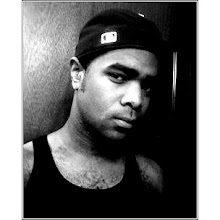I often here people complain about the current state of hip hop. People say it’s too violent, too misogynistic, and too negative. I do not disagree that hip hop is negative. Much of hip hop’s subject matter is negative. I disagree, however, with the contention that the subject matter is getting worse. In my opinion, I think hip hop music has cleaned up its act drastically over that last ten years.
I recently heard someone mention, when discuss the “sad” state of the music, that hip hop should return to the days of Slick Rick, Public Enemy, and Boogie Down Productions, the days that the overwhelming amount of today’s hip hop listeners feel were void of violence and misogyny. If people really paid attention the music of that era, they would here large amounts of violence, sexism, and misogyny. Slick Rick’s 1988 album “The Great Adventures Of…” opens with a song entitled “Treat Her Like a Prostitute” in which MC Ricky D advises men to treat their significant others like hookers until they were secure in the woman’s fidelity. Public Enemy’s “She Watch Channel Zero” characterizes women as mindless animals who do nothing but sit around and watch soap operas all day. Boogie Down Production’s first album “Criminal Minded” was littered with black on black angst and violence in songs such as “The P(ussy) is Free”, “Super Hoe”, and “9MM Goes Bang”
The early 90s was both the highest and the lowest point in terms of subject matter for hip hop. While the music addressed issues such as police brutality, racism, and AIDS, it also was the dominated by misogyny and violence. N.W.A was the poster child of this era. While their first album, “Straight Outta Compton” put a melody to the turmoil in the inner city, Niggaz4Life (their second album) was one of the most sinful recordings every created on a mainstream label. It included songs such as “To Kill A Hooker”, “Find’em F*ck’em & Flee”, “One Less B*tch”, and “I’d Rather F*ck You”. NWA not only features gang culture violence and misogyny, but they venture into the world of sexual violence. Along with N.W.A., other artists such as Too $hort, 2 Live Crew, Geto Boys, Spice 1, and Kool G. Rap help make the era in rap, the most “negative” in my opinion. Even a quote on quote “positive” rapper of this era such as Q-Tip of one of my favorite groups, A Tribe Called Quest, makes a contribution to misogyny in “Electric Relaxation”.
The late 1990s began the boom in exposure for hip hop and with it came a calculated move by labels and artists to clean up their music in order to make in accessible to wider audiences. The violence lessened, the misogyny lessened, and the music was sanitized. Pop rappers such as Ma$e, P. Diddy, and Jay-Z began dominating their charts as they mixed the lifestyles of the poor and the wealthy into a brand of music that was well received in both the hoods and the suburbs. This era continues to thrive.
If one compares the hip hop of today with that of yesterday, they would see how much cleaner the music has gotten. While I contend that the music itself is less negative, I do admit the visuals are drastically more negative. They are more negative and have more widespread. Fifteen years ago, there were very few hip hop videos being made and broadcast. Today, hip hop is in regular rotations on channels such as B.E.T. Hip hop videos are primarily used to promote a record. Sex sells and music videos are the tool in which to sell the sex. Artists such as Nelly, 50 Cent, and Ying Yang Twins are businessmen who employ sexual images to raise their profit margin. Today’s problem is not the music itself, but the images that accompany the music.
Whenever someone requests the return of “old school” rap, I hope they check out the artists I have mentioned and really listen to what is being said. If they do so, I guarantee their feelings about today’s hip hop will become more positive.
Tuesday, June 27, 2006
Subscribe to:
Post Comments (Atom)


No comments:
Post a Comment